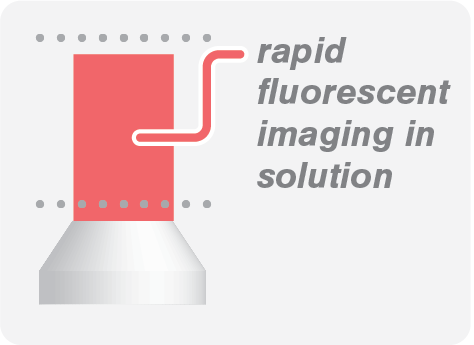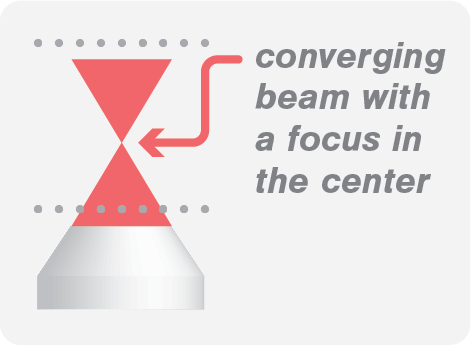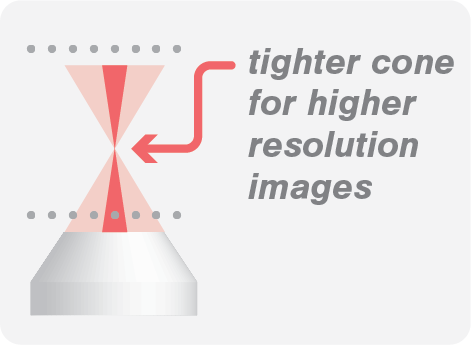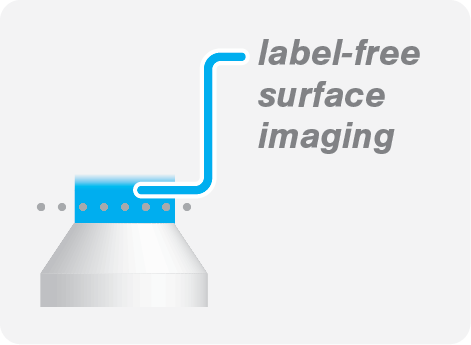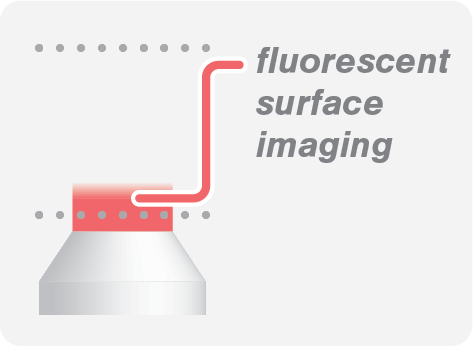
What is TIRF microscopy?
Total internal reflection fluorescence (TIRF) microscopy excites fluorophores in a thin region of the sample1. Only fluorescent molecules that are close to the solid (usually the surface of a glass coverslip) are efficiently excited. This enables you to visualize surface-bound molecules or cells with high resolution.
Let’s look at a cell in a traditional widefield microscope. The cell sits on a glass surface in an aqueous environment and the fluorescent molecules in the cell are excited by laser or radiation that passes through the entire sample. A detector collects the resulting fluorescence signal subsequently generating an image.
However, what if you are interested only in a specific part of a cell or the cells interacting with the glass surface? You might only be interested in knowing if the whole cell attaches to the glass surface or just a specific part of it. The traditional widefield setup is limited and cannot help you to answer these questions since the whole cell surface is excited. Total internal reflection occurs when light is completely refl ected off a surface. In TIRF microscopy, you use the difference in refractive index between water and glass to reflect all the light at the interface of the glass-water surface.
But, how do fluorophores near the interface get excited if the light is completely reflected? Well, at the point of total internal refl ection a special kind of wave is generated, known as an evanescent wave. The energy of this wave decays exponentially from the interface, so it travels only about 100 nm up into the second medium, which contains the sample. In this way, the evanescent wave only excites fluorophores very close to the interface.
Explore other imaging techniques
Widefield
Image biomolecular processes with low protein concentration in solution with high acquisition rates.
Confocal Fluorescence
Multicolor confocal, perfect for visualizing biological processes in solution.
STED Super Resolution
The perfect choice for performing experiments in highly crowded environments, offering unprecedented resolution (< 35 nm).
IRM (label-free)
IRM allows you to visualize microtubules without the need for fluorescence labeling.
References
- Kenneth et al. (2009) Total Internal Reflection Fluorescence (TIRF) Microscopy. Current protocols in cytometry
Our solution
The C-Trap® Optical Tweezers – Fluorescence & Label-free Microscopy is the world’s first instrument that allows simultaneous manipulation and visualization of single-molecule interactions in real time. It combines high resolution optical tweezers, fluorescence and label-free microscopy and an advanced microfluidics system in a truly integrated and correlated solution.
The C-Trap offers you a fast workflow to seamlessly catch and manipulate single molecules. The instrument measures their structural changes or interactions while you visualize them in teal time with high spatial and temporal resolution, ultimately offering you a complete and detailed picture of biomolecular properties and interactions
Curious to learn more?



